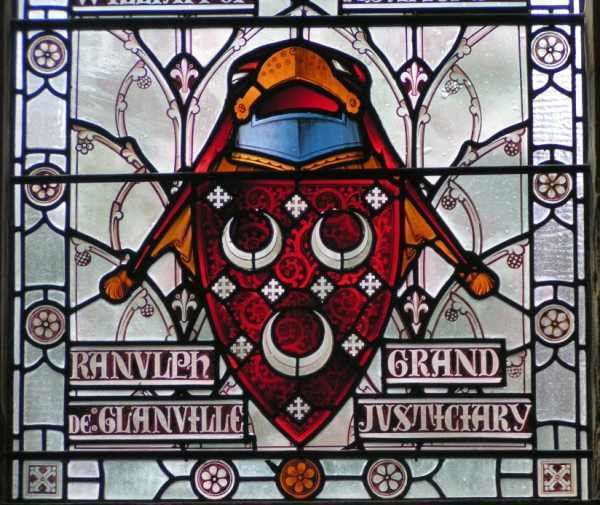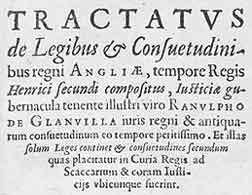Name Ranulf Glanvill Role Author | ||
 | ||
Succeeded by William de MandevilleHugh de Puiset Books A Translation of Glanville Similar Henry II of England, Richard de Luci, Michael Clanchy Chief Justiciar of England In office (1180 – 17 September 1189) Monarch Henry II Preceded by Richard de Luci Succeeded by William de Mandeville, Hugh de Puiset Sheriff of Lancashire In office (1173–?) Monarch Henry II Sheriff of Yorkshire In office (1163–1170) Sheriff of Yorkshire In office (1175–?) Justice of the King's Court In office (1176–1180) Born c. 1112 Stratford St Andrew, Suffolk Died 1190 (aged 78) Acre, Palestine | ||
Ranulf de Glanvill (alias Glanvil, Glanville, Granville, etc., died 1190) was Chief Justiciar of England during the reign of King Henry II (1154–89) and was the probable author of Tractatus de legibus et consuetudinibus regni Anglie (The Treatise on the Laws and Customs of the Kingdom of England), the earliest treatise on the laws of England.
Contents

Political and legal career
He was born c. 1112 at Stratford St Andrew near Saxmundham in Suffolk, but there is little information about his early life. He is first heard of as Sheriff of Yorkshire, Warwickshire and Leicestershire from 1163 to 1170 when, along with the majority of High Sheriffs, he was removed from office for corruption. However, in 1173 he had been appointed Sheriff of Lancashire and custodian of the honour of Richmond. In 1174, when he was Sheriff of Westmorland, he was one of the English leaders at the Battle of Alnwick, and it was to him that the king of Scotland, William the Lion, surrendered. In 1175 he was reappointed Sheriff of Yorkshire, in 1176 he became justice of the king's court and a justice itinerant in the northern circuit, and in 1180 Chief Justiciar of England. It was with his assistance that Henry II completed his famous judicial reforms, though many had been carried out before he came into office. He became the king's right-hand man, and during Henry's frequent absences was in effect regent of England. In 1176 he was also made custodian of Queen Eleanor, who was confined to her quarters in Winchester Castle.
After the death of Henry in 1189, Glanvill was removed from his office by Richard I on 17 September 1189 and imprisoned until he had paid a ransom, according to one authority, of £15,000. Shortly after obtaining his freedom he took the cross, and he died at the siege of Acre in 1190.
He founded two abbeys, both in Suffolk: Butley, for Black Canons, was founded in 1171, and Leiston Abbey, for White Canons, in 1183. He also built a leper hospital at Somerton, in Norfolk.
Marriage & progeny
Ranulf married Bertha de Valoignes, daughter of Theobald de Valoignes, lord of the manor of Parham, Suffolk, by whom he had three daughters:
Tractatus de legibus
Perhaps at the instigation of Henry II, Glanvill wrote or oversaw the writing of Tractatus de legibus et consuetudinibus regni Anglie (The Treatise on the Laws and Customs of the Kingdom of England), a practical discourse on the forms of procedure in the king's court, which was often known simply as Glanvill. As the source of our knowledge regarding the earliest form of the curia regis, and for the information it affords regarding ancient customs and laws, it is of great value to the student of English history. It is now generally agreed that the work of Glanvill is of earlier date than the Scottish law book known from its first words as Regiam Majestatem, which bears a close resemblance to his.
The treatise of Glanvill was first printed in 1554. An English translation, with notes and introduction by John Beames, was published at London in 1812. A French version is found in various manuscripts, but has not yet been printed. The treatise was then edited and translated by G.D.G. Hall for the Oxford University Press 1965. The Tractatus may in fact have been ghostwritten by Ranulf's nephew Hubert Walter, the Chief Justiciar and Lord Chancellor of England under Richard I.
